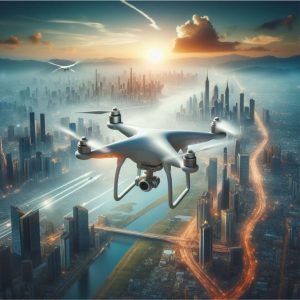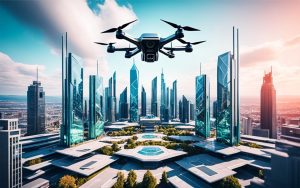 As drones become increasingly integrated into our daily lives, ensuring their safe operation in populated areas is paramount. The emergence of new artificial intelligence (AI) technology is revolutionizing drone safety by enabling intelligent path planning to avoid risks associated with flying over people and navigating urban environments. In this article, we’ll explore how this innovative AI technology is reshaping drone safety protocols and enhancing public safety.
As drones become increasingly integrated into our daily lives, ensuring their safe operation in populated areas is paramount. The emergence of new artificial intelligence (AI) technology is revolutionizing drone safety by enabling intelligent path planning to avoid risks associated with flying over people and navigating urban environments. In this article, we’ll explore how this innovative AI technology is reshaping drone safety protocols and enhancing public safety.
Intelligent Path Planning for Drone Safety: Traditional drone flight paths often pose risks when flying over crowds or navigating complex urban landscapes. However, new AI technology is revolutionizing drone safety by enabling intelligent path planning algorithms. These algorithms analyze real-time data on environmental factors, airspace restrictions, and population density to calculate the safest and most efficient routes for drones. By dynamically adjusting flight paths in response to changing conditions, AI-powered drones can avoid potential hazards and mitigate the risk of accidents or collisions with people or objects.
Enhancing Safety in Urban Environments: Navigating drones through densely populated urban areas presents unique challenges and safety concerns. AI technology addresses these challenges by enabling drones to navigate complex urban environments safely and efficiently. By leveraging advanced sensors, machine learning algorithms, and real-time data processing, AI-powered drones can identify and avoid obstacles, such as buildings, vehicles, and pedestrians, with precision and accuracy. This intelligent navigation capability ensures that drones can operate safely in urban environments while minimizing the risk of accidents or disruptions to public safety.
Improving Public Acceptance of Drone Technology: Public acceptance of drone technology hinges on ensuring its safe and responsible use. By leveraging AI-powered path planning technology, drone operators can demonstrate their commitment to safety and mitigate concerns about potential risks associated with drone operations.
By proactively addressing safety concerns and adhering to stringent safety protocols, drone operators can build trust with the public and regulatory authorities, paving the way for broader acceptance and integration of drones into daily life.
 Future Implications and Considerations: The integration of AI technology into drone safety protocols holds significant promise for the future of unmanned aerial systems. As AI algorithms continue to evolve and improve, drones will become even safer and more capable of operating in complex and dynamic environments. However, ongoing research and development efforts are needed to address challenges such as regulatory compliance, privacy concerns, and cybersecurity threats. By collaborating with industry partners, government agencies, and academic institutions, stakeholders can advance the adoption of AI-powered drone technology and unlock its full potential to benefit society.
Future Implications and Considerations: The integration of AI technology into drone safety protocols holds significant promise for the future of unmanned aerial systems. As AI algorithms continue to evolve and improve, drones will become even safer and more capable of operating in complex and dynamic environments. However, ongoing research and development efforts are needed to address challenges such as regulatory compliance, privacy concerns, and cybersecurity threats. By collaborating with industry partners, government agencies, and academic institutions, stakeholders can advance the adoption of AI-powered drone technology and unlock its full potential to benefit society.
 Conclusion: Intelligent technology is transforming the landscape of drone safety, enabling drones to navigate crowded urban environments and fly over people safely and responsibly. By leveraging AI-powered path planning algorithms, drones can avoid potential hazards and mitigate risks associated with their operation. This innovation not only enhances public safety but also accelerates the integration of drones into various industries, including transportation, logistics, and public safety. As AI technology continues to advance, the future of drone safety looks brighter than ever, promising safer skies and broader acceptance of drone technology in our communities.
Conclusion: Intelligent technology is transforming the landscape of drone safety, enabling drones to navigate crowded urban environments and fly over people safely and responsibly. By leveraging AI-powered path planning algorithms, drones can avoid potential hazards and mitigate risks associated with their operation. This innovation not only enhances public safety but also accelerates the integration of drones into various industries, including transportation, logistics, and public safety. As AI technology continues to advance, the future of drone safety looks brighter than ever, promising safer skies and broader acceptance of drone technology in our communities.
















































